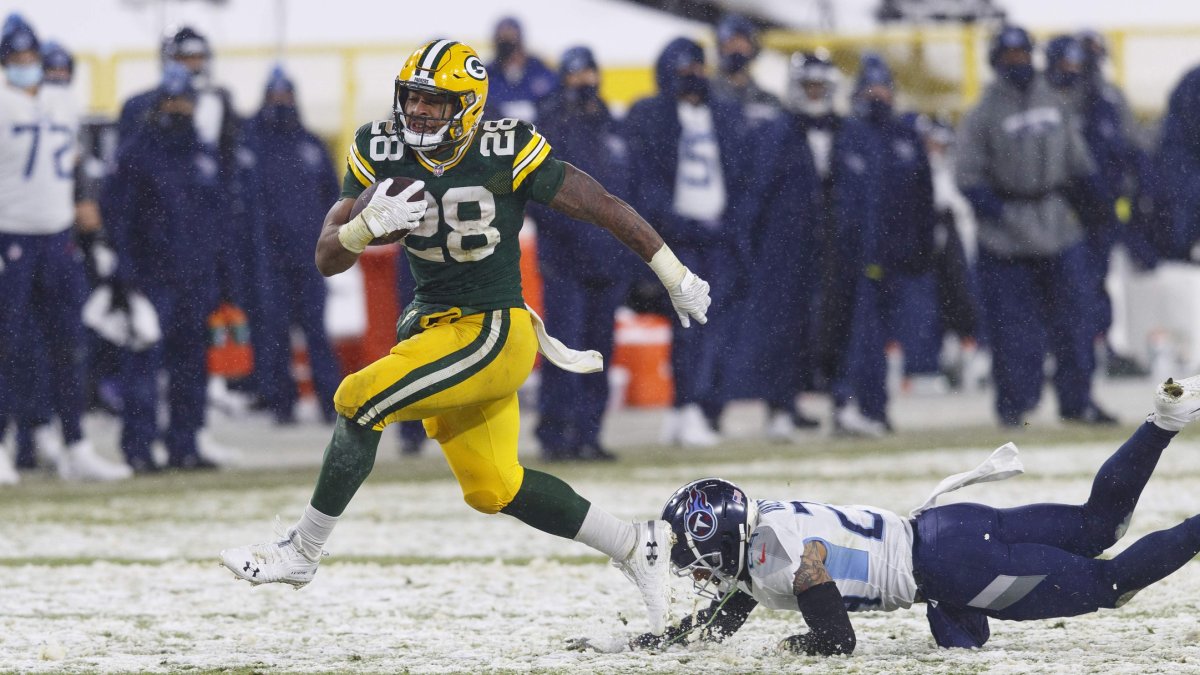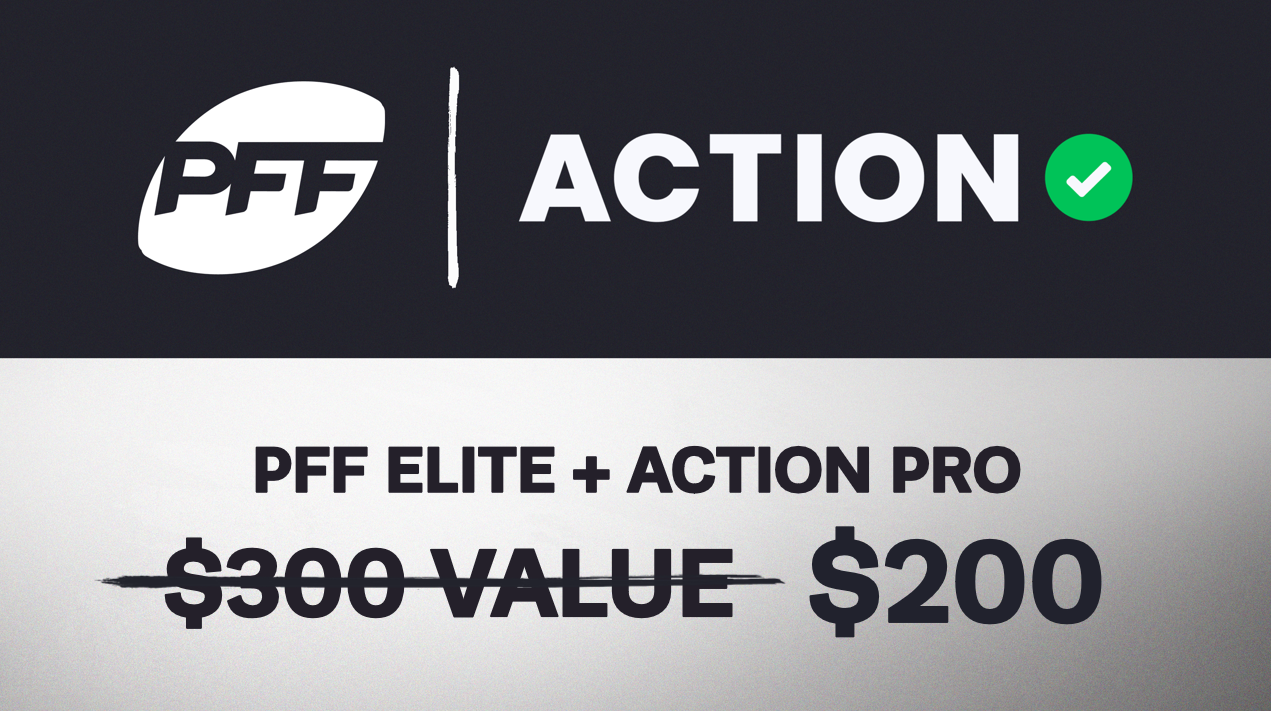Dynasty players often view the regular season as a time for their hard work in the offseason to finally pay off. The 16 weeks of meaningful football from September to December are simply the proving grounds for their trades of aging veterans, draft pick swaps and sneaky additions of training camp standouts. There are still plenty of edges to exploit in the regular season, though.
Here are the biggest dynasty risers and fallers and whether you should buy or sell the changing values.
Risers: WRs D.J. Chark and Laviska Shenault Jr., Jacksonville Jaguars
For Jaguars fans, the implications of the 2020 season should be finally sinking in. Jacksonville lost to the Chicago Bears last week. Coupled with a Jets win over the Browns, they have officially won the Trevor Lawrence lottery. Because of that, the main receivers involved (Chark and Shenault) should start being viewed as the weapons for a quarterback at the skill level of Joe Burrow at a minimum.
Lawrence went from topc25 in yards per attempt (min. 150 dropbacks) as a freshman to top 15 as a sophomore to top 10 this season. He has two seasons with a passing grade above 90.0. Lawrence is going to present a seismic turnaround for the Jaguars' offense. The main beneficiaries of that will be Chark and Shenault.
Keelan Cole’s counting stats this year show a player who could compete with his teammates for targets. All three players are grouped between 52 and 53 receptions. However, Cole’s stats are simply the product of him being the only healthy receiver for Jacksonville at times.
| Name | Total Routes Run | Yards per Route Run | Targets per Route Run |
| Keelan Cole | 565 | 1.12 | 0.14 |
| D.J. Chark Jr. | 497 | 1.42 | 0.19 |
| Laviska Shenault Jr. | 372 | 1.49 | 0.19 |
On a per-route basis, Shenault and Chark have shown an ability to draw targets and create yards at a level that Cole simply hasn’t. Cole isn’t under contract for 2021, but with second-round capital invested in both of the team's top receivers, it’s likely that the Jaguars bring him back or insert a similarly middling player into his role.
With the top receivers on a team about to do a 180, there is value to be had in buying low on Jacksonville before it drafts Lawrence and then again before he takes the field for them.
Faller: WR Julio Jones, Atlanta Falcons
Jones’ health is the obvious concern for his long-term outlook, but Calvin Ridley’s recent performances indicate a changing of the guard. Ridley has played in six games without Jones this year, flashing as one of the league's true alpha receivers in those outings.
Calvin Ridley 2020 stats without Julio Jones
| Yards per route run | Target share | Air yards share | |
| Value | 2.98 | 42.8% | 51.4% |
| Rank | 2 | 1 | 1 |
Whenever Jones is out, Ridley looks the part as one of the best No. 1 receivers. With Jones now 32 years old and coming off his worst season by yards per game, it’s easy to see the Falcons going down a path of Ridley as their primary pass-catcher and Jones as his foil.
Riser: RB A.J. Dillon, Green Bay Packers
It’s hard to take much away from one game of Dillon, but given that he doubled his season-long rushing total in one week, he has to pop up as a riser. Much of his fate will ride on how he is used in the final week of the regular season and throughout the playoffs. If the Packers show a willingness to give him double-digit carries every week, his value could go through the moon.
Both Jamaal Williams and Aaron Jones are free agents at the end of the year, and Jones will likely be asking for a sizable contract. If the Packers let him walk, Dillon will be the presumed starter, increasing his value to the third or fourth round of startup drafts overnight. If the price isn’t too steep, Dillon is worth buying based on his asymmetric upside.
Faller: WR Marquez Valdes-Scantling, Green Bay Packers
Whenever Allen Lazard is healthy, Valdes-Scantling can simply be written off. Lazard opened the season out-snapping his counterpart in three straight games and has played on more snaps than him over their previous three games, as well.
Despite being on a snap count after his return from injured reserve, Lazard has also out-targeted Valdes-Scantling, 25 to 15, since Week 11. There isn’t going to be much of a mark for Valdes-Scantling, but even some late-round fliers in rookie drafts have more upside than he does with Lazard on the field.
Riser: TE Donald Parham, Los Angeles Chargers
Hunter Henry has been serviceable this year but hasn’t done much to earn a new contract with the Chargers if there is a significant market for him in the offseason.
This season, he’s outside the top 20 tight ends (min. 30 targets) in receiving grade, yards after the catch per reception and passer rating when targeted. If Parham is able to go in Week 17, it will be a chance for the Chargers to evaluate what they have in the receiving room if Henry walks. Parham was a massively athletic and highly productive small-school prospect before making his way to the XFL. Through five games, he ranked top five in receptions, touchdowns and receiving yards among all players. His 68.8 receiving grade was also first among tight ends (min. 15 targets).
Based on his athleticism and history of production, Parham has a path to becoming the next Logan Thomas or Darren Waller. He needs to be stashed in the most shallow of dynasty leagues.
Faller: RB Damien Harris, New England Patriots
Harris needs Sony Michel needs to fall off to have any value. If that isn’t the case, he’ll be nothing more than a committee back on a team with a struggling offense.
Michel saw his first carries since September in Week 13. Dating back to that game, his 72.4 running grade ranks 13th among running backs and his 3.41 yards after contact per attempt ranks 10th (min. 30 carries).
The value proposition with Harris was always that Michel is a lesser back and he would eventually supplant Michel as the primary ball-carrier in New England. Anything less than that, and his value returns to near zero. We’re now headed in that direction.




 © 2024 PFF - all rights reserved.
© 2024 PFF - all rights reserved.